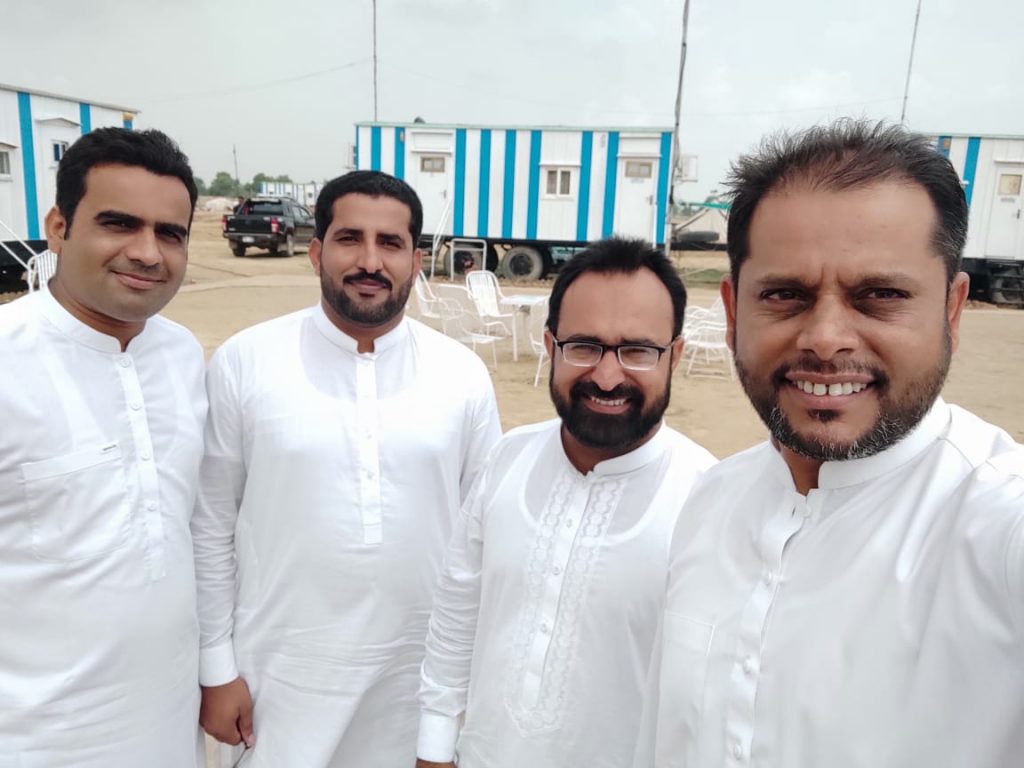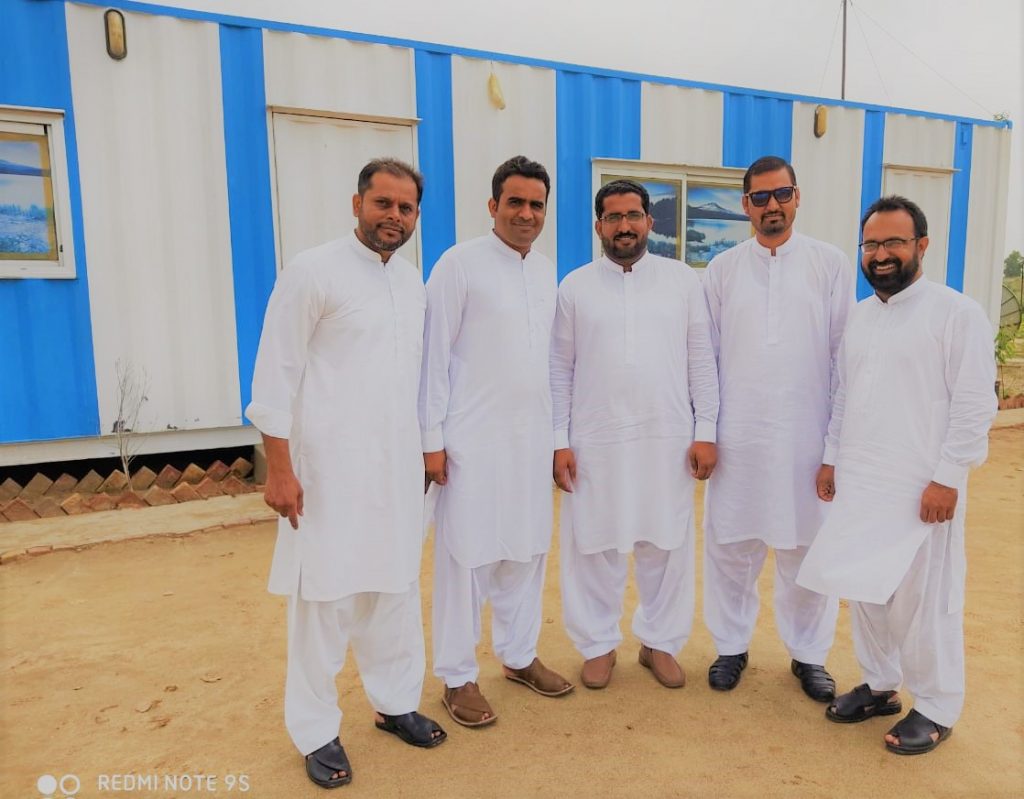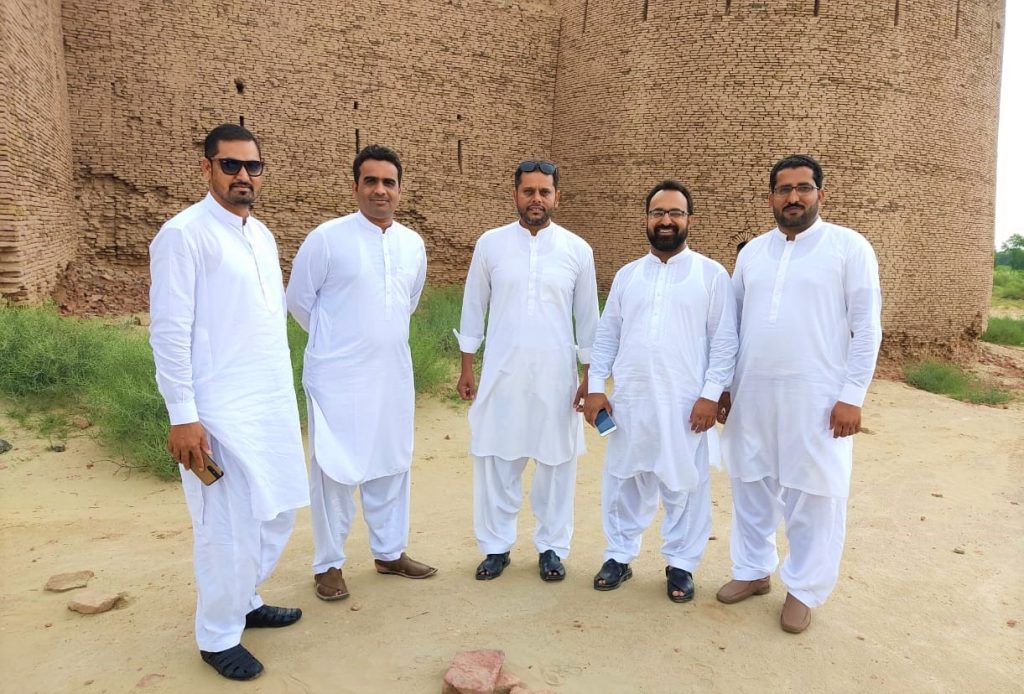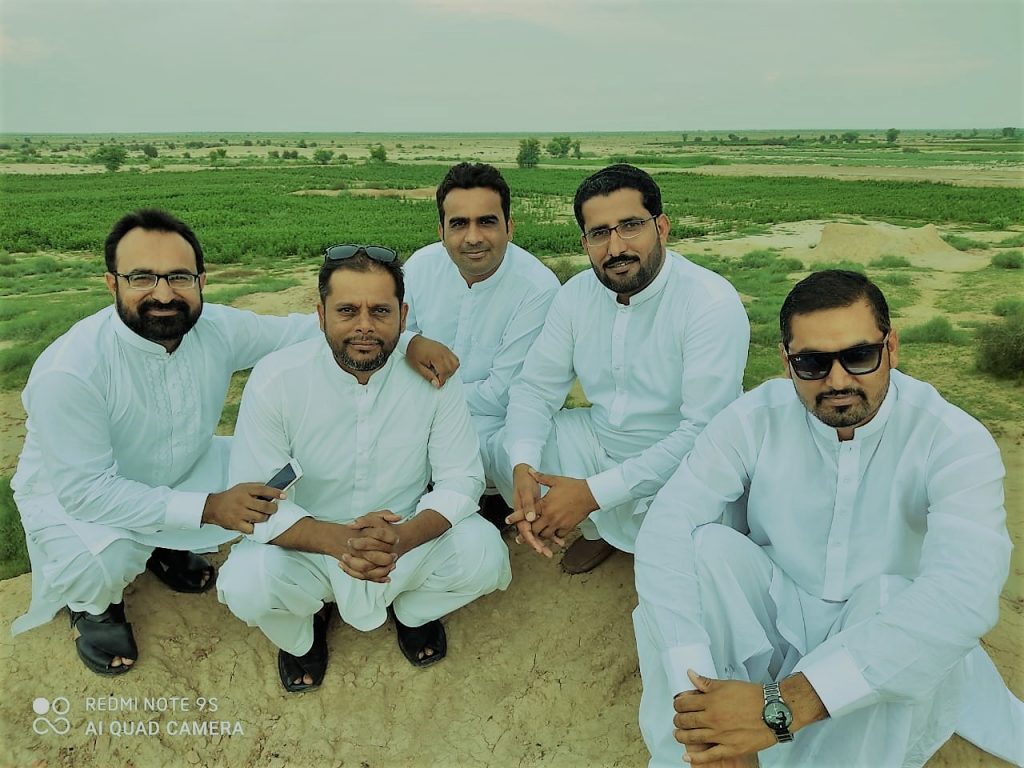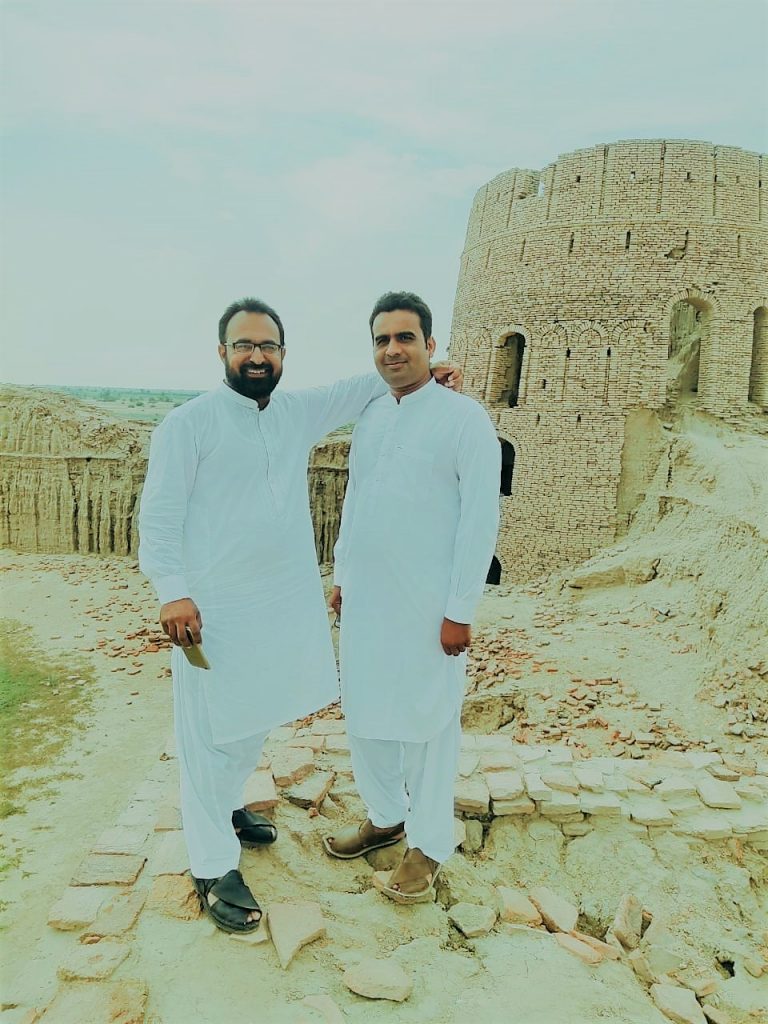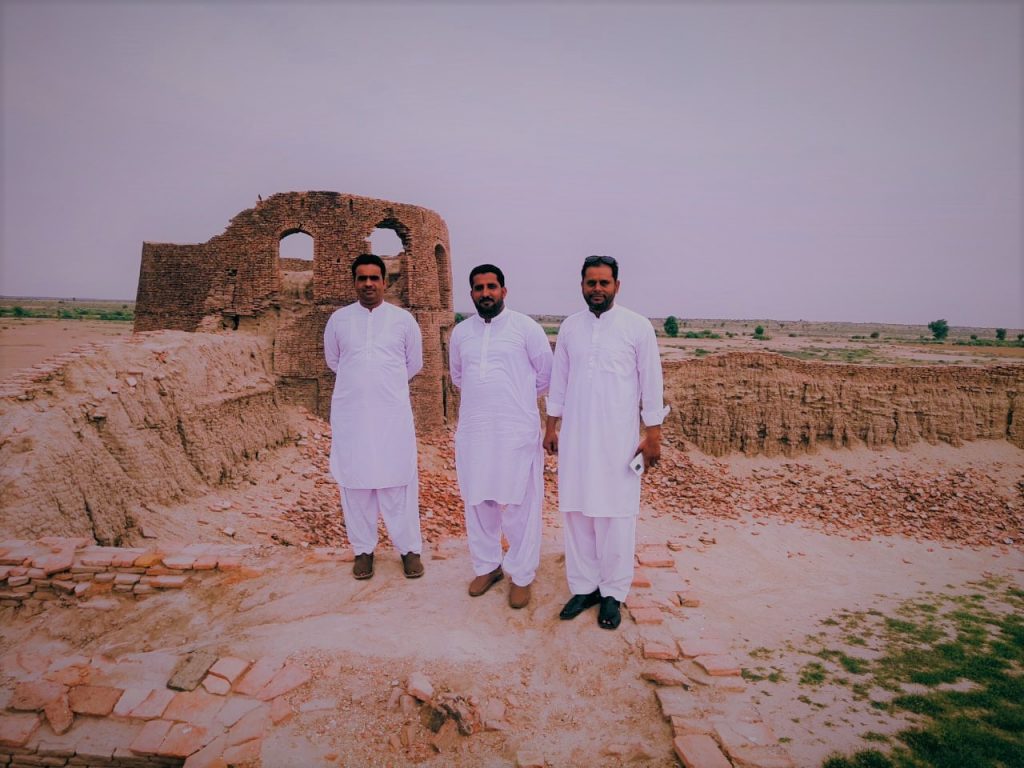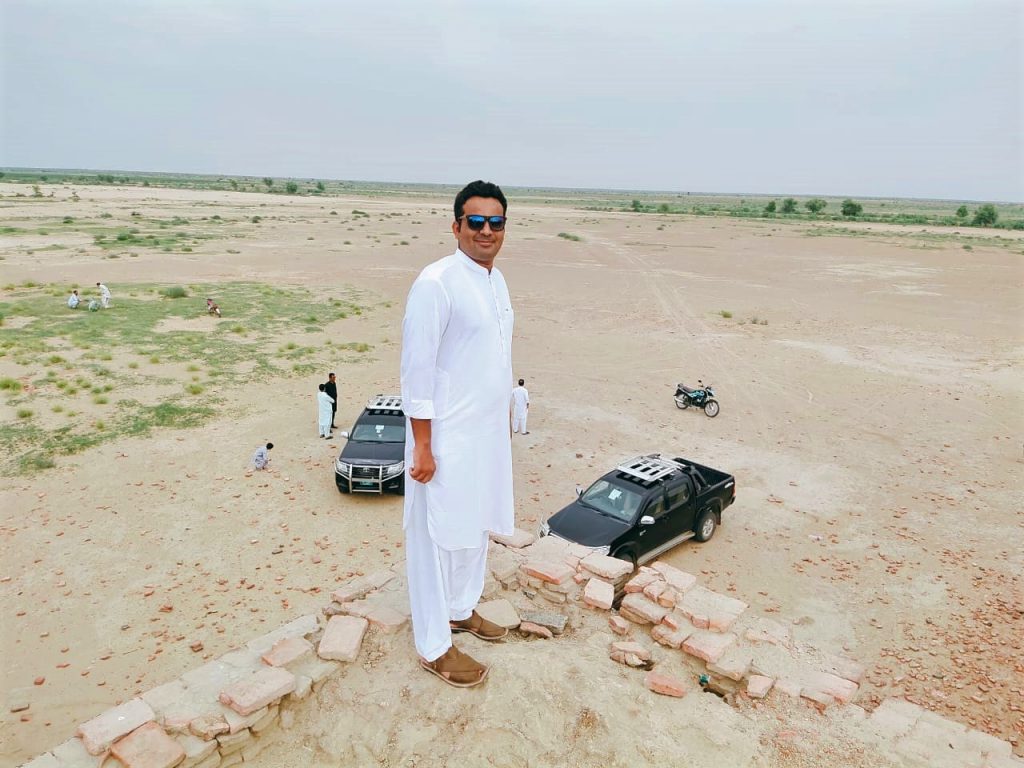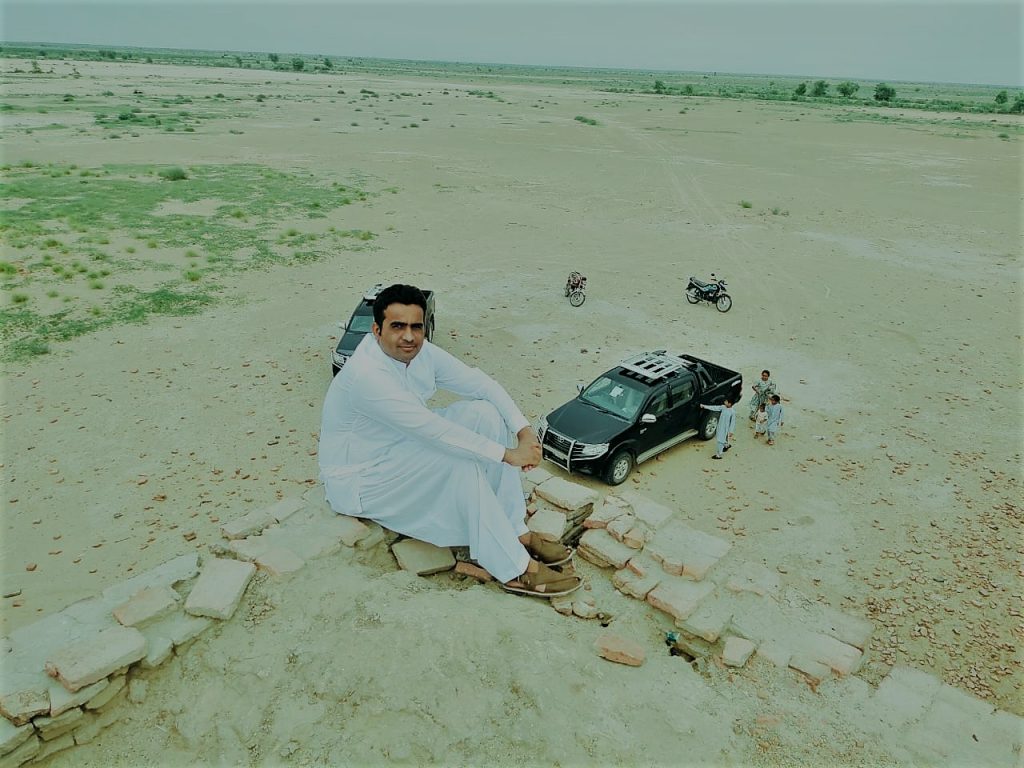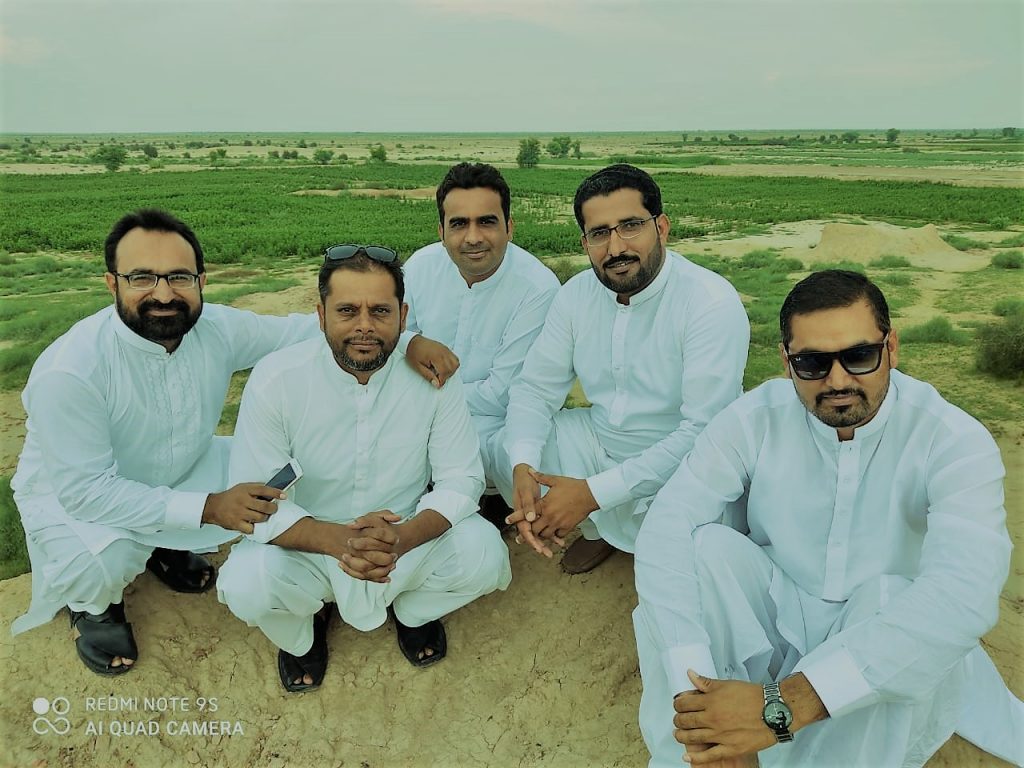
Once I read somewhere that man is not only a casual seeker of beauty but a consistent pursuer of it. And, I realize, certainly with time, that only nature can satisfy this persistent search for beauty embedded in a human system. And I found that rivers, mountains, and deserts are three beauties of nature that attract thirsty souls like me.
For long, I have been thinking over Roohi, a name given to the vast expansive landscape of Cholistan Desert by Khawaja Ghulam Fareed, an iconic Seraekee poet. I have been contemplating spending a full-moon night in Roohi. I wish to see how beautiful white twilights of full-moon sprinkle around the vast expanse of the desert and how the desert transforms and changes over the night.
Nevertheless, a friend near-and-very-dear to me, Ghulam Mustafa Baig, a Geophysicist in OGDCL, relocated to a place near Fort Abbas, District Bahawalnagar with his Seismic Party, 5. This was an opportunity not to be missed at any cost. So, we set a plan for sightseeing in the Cholistan Desert. And fortunately, an alumnus of Quaid-e-Azam University, Mr Shabbir Ahamd Ludhar, arranged a local guide to steer our journey into the vast expanses of Roohi.
Feasting on Mutton Lamb
We reached the camp on Saturday with friends, Dr Shafique Ahmad, and Mr Shahbaz Ahmad and ate a sumptuous lunch at the container-turned dining hall. The mutton lamb is a speciality there and we have been notorious for not refusing that treat whenever we find an opportunity to have it. And we were fortunate this time to be introduced to the taste of Nawab, the chief chef of the Seismic Party, 5. Lunch includes roasted-and-spicy mutton lamb, mutton karahi, palak paneer, chicken pulao, and daal chana. In desserts, we were served Ice-creams. Respected Muhammad Mansha, a colleague of Ghulam Mustafa, also accompanied us and managed transport for sightseeing.
Traversing Marot City
Marot is a historical city in the district Bahawalnagar in the southern part of Punjab. Notwithstanding its cotton fields now, the city used to be a once-thriving desert civilization containing some famous forts, like Fort Meer Garh, Fort Jaam Garh, Fort Mojgarh, and Marot Fort. Our guides took us to these forts and we were fortunate to sightseeing Meer Garh and Jaam Garh Fort.
We were a company of five traversing through vast expanses of deserts, popularly known as Roohi. There were scattered instances of population, irrigation, and settlements. We witness a greater deal of outskirts of the desert on the side of Fort Abbas was being earmarked for Army Welfare Scheme. I could not make sense of what does this entail. However, we saw settlements and plantations in different parts of the desert.
Fort Meer Garh
Fort Meer Garh is around 7-10 kilometres from the Yazman-Fort Abbas road. Our guide informed us that all the five famous forts of Choolistan are in the same line starting from Fort Meer Garh. According to him, there used to be secrets underground tunnels connecting one fort with another. Fort Meer Garh is in a dilapidated state and looks shaky. It is an excellent mud structure tiled by flat brick, that is often known as ‘pani wali brick’ in the local jargon.
Despite its shaken structure inside, it appears majestic to the sight-seers. And the view from the top is awesome and expansive. You just stand on the walls of the fort and there is an infinite landscape of Roohi before you- a continuous and green. That aesthetic treatment is original and pure. One tries not to dwell into deep expanses of desert, but also traverses deep into history too. Sitting on the Meer Garh fort muscles our imagination too; that how Rajas used to live and rule their subjects, and what they did when attacked by enemies, and how the life at this magnificent fort would be. Even a few of our friends were contemplating the private life of Raja too.
Fort Jaam Garh
After visiting Meer Garh fort and refreshing our imagination, we drove towards another fort, Fort Jaam Garh, that was around 5 kilometres away. On the western side, the road was studded with scatter bastis, cotton fields, and katchi abadies. However, on the eastern side, there was more desert and less abadi. We saw hundreds of cattle grazing freely and indifferently in the desert. The Roohi is generous and when it rains it becomes an attraction for the cattle farmers. And, after rain, you see an endless grassy landscape studded with grazing cattle. There were toobas, the rain-water pounds, too. And loo, we reach Fort Jaam Garh.
Fort Jaam Garh is situated in a perfect place and it is in better condition than Fort Meer Garh. It has less of irrigation and settlement and more desert around. However, I fear that will not last too long as on the south side of this fort, we saw tractors ploughing the land. However, on the eastern side of this fort, there is a perfect spectacle for the beauty-seekers. You sit on the walls of the fort and gazing the eastern side of Roohi and your eyes fill with the expansive spectacle of Roohi, green, infinite, and aesthetic.
We could not make it to other forts as we had to return back. And on our returning to the camp, I was thinking that how nature is so generous to us; nature creates beauty for us even in deserts. And how we humans are searching beauties in place, away from the reach and exploitation of race of men. It’s sad we are not generous and polite to nature as she has always been to us.

